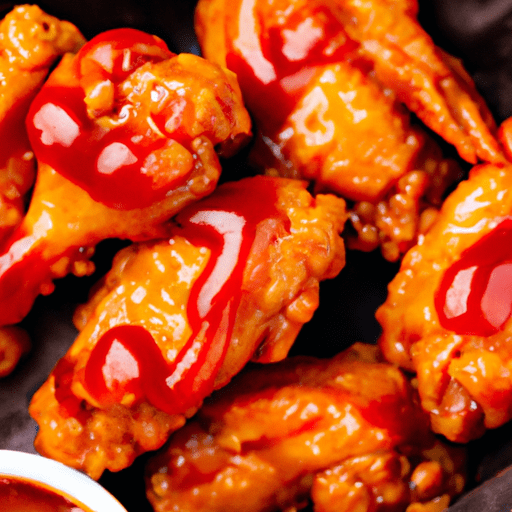Crispy and Delicious: All About Chicken Fingers
Chicken fingers, also known as chicken tenders or chicken strips, are a beloved and versatile dish that never fails to satisfy the taste buds. Whether you’re a fan of finger foods or simply looking for a quick and easy meal option, chicken fingers are a go-to choice. In this article, we’ll dive into the world of chicken fingers, exploring their taste, common uses in cooking, nutritional value, and a sprinkle of interesting history. So, let’s get started and discover what makes chicken fingers so irresistible!
The Taste that Leaves You Craving More
One of the reasons chicken fingers are universally loved is their delicious taste. The perfect balance of savory and crispy, they offer a mouthwatering indulgence. These tender strips of chicken breast are typically coated in a seasoned breading or batter, resulting in a satisfying crunch with every bite. The seasoning can vary; some recipes opt for a mild flavor, while others incorporate spices that add a kick of heat. No matter the flavor profile, chicken fingers are a treat for your taste buds.
Versatile in Cooking, Endless in Creativity
Chicken fingers are incredibly versatile and can be used in various culinary applications. Their size and shape make them ideal for finger foods, appetizers, or even the star of the main course. As an appetizer or snack, they can be served with classic dips like tangy barbecue sauce, zesty buffalo sauce, or creamy ranch dressing. For a main course, chicken fingers can be the centerpiece of a hearty salad, nestled into soft and warm slider buns, or paired with a side of crispy French fries. The possibilities are endless, limited only by your imagination!
Nutritional Value: A Guilt-Free Pleasure
While chicken fingers are undeniably delicious, you might be wondering about their nutritional value. The good news is that they can be enjoyed as part of a balanced diet. Since chicken fingers are made from lean chicken breast, they are a great source of protein. Protein is essential for building and repairing body tissues, as well as supporting a healthy immune system. However, it’s important to keep in mind that the nutritional content can vary depending on the preparation method. Baking or air-frying chicken fingers instead of deep-frying them can reduce their overall fat content without sacrificing the crispy texture and flavor.
A Little Dip into History
While the exact origin of chicken fingers is unclear, it’s believed that they gained popularity in the United States during the 1950s. As fast-food chains began to boom, chicken fingers quickly became a crowd-pleasing menu item, appealing to both children and adults alike. Over time, they evolved from a fast-food staple to a widely loved dish found in restaurants and kitchens around the world. Today, chicken fingers have become a classic comfort food, embraced by people of all ages.
Chicken fingers are an undeniable culinary delight. Their appealing taste, versatility in cooking, and nutritional value make them an all-around winner. Whether you’re planning a game-day gathering, a family meal, or a solo indulgence, chicken fingers are always a crowd-pleaser. So go ahead, get cooking, and experience the satisfying crunch and juicy tenderness of homemade chicken fingers. Your taste buds will thank you!
Note: While chicken fingers are widely enjoyed, moderation is key to maintaining a balanced diet. Pair your chicken fingers with nutritious sides like fresh vegetables or a crisp salad for a well-rounded meal.
Facts about Chicken Fingers:
Origin: Chicken fingers, also known as chicken strips or chicken tenders, are believed to have originated in the United States. They first gained popularity in the 1980s and have since become a staple in fast-food menus and home cooking.
Common uses: Chicken fingers are commonly served as a main dish, appetizer, or snack. They are often breaded and fried or baked until crispy. Chicken fingers are frequently served with dipping sauces such as ketchup, barbecue sauce, honey mustard, or ranch dressing.
Nutritional benefits: Chicken fingers are a good source of protein, which is essential for building and repairing tissues and maintaining overall health. However, the nutritional content can vary depending on the cooking method and the ingredients used in the breading. Baking or grilling chicken fingers can be a healthier option compared to deep-frying.
Unique properties: Chicken fingers are typically made from chicken breast meat, which is known for its lean and tender qualities. The chicken meat is often sliced into long, thin strips to create the finger-like shape. The breading used for chicken fingers can vary, ranging from a simple flour coating to a seasoned breadcrumb mixture.
Historical significance: While chicken fingers as a dish are not historically significant, they are part of a broader historical trend in the United States where chicken became increasingly popular and widely consumed. Chicken fingers reflect the growing demand for convenient, easy-to-eat chicken options, especially among children and fast-food consumers.
It’s worth noting that while chicken fingers are a popular and widely enjoyed dish, they should be consumed in moderation as part of a balanced diet.




Use the share button below if you liked it.
It makes me smile, when I see it.